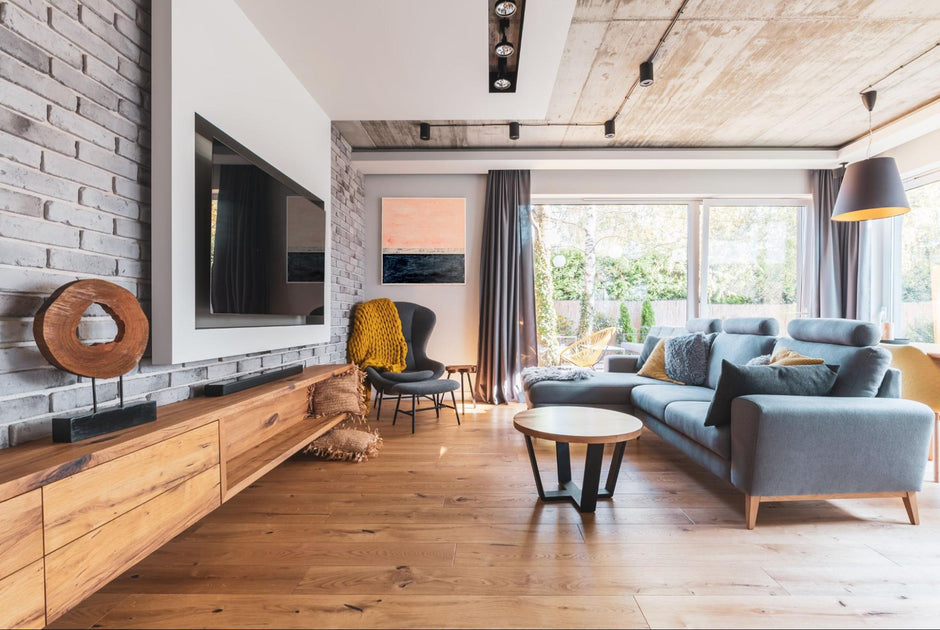TV sizes refer to the diagonal measurement of the screen, typically measured in inches. The size of a TV screen can have a significant impact on the viewing experience, as it affects the level of immersion and detail that can be seen. The most common TV sizes are 32 inches, 40 inches, 50 inches, 55 inches, 65 inches, and 75 inches, but there are many other sizes available on the market. The biggest TV size currently commercially available is 110 inch. Generally, smaller TVs are more suitable for bedrooms, kitchens, or small living rooms, while larger TVs are better suited for larger living rooms or home theater setups.
How To Measure TV Size
The standard way to measure TV size is measuring the diagonal of the screen. Here’s how to do it: Place your tape measure at one corner of the TV screen. Stretch the tape measure diagonally to the opposite corner of the screen. Measure from one corner of the screen to the opposite corner, making sure that you're measuring the full length of the diagonal. Make sure that you're measuring the actual screen and not the entire TV frame or bezel. The screen is the part that displays the image. This is the size of your TV.
What is the Best TV Size For Your Home?
Overall, it's important to find a TV size that is comfortable to watch and fits well in your space. Follow some general guidelines when making your purchasing decision. Firstly, Consider the size of the room where the TV will be placed. For smaller rooms, a TV with a screen size of 32-43 inches may be sufficient, while larger rooms may benefit from a TV with a screen size of 50-75 inches or even larger. Also consider the distance between the TV and the seating area. As a general rule of thumb, the viewing distance should be about 1.5 to 2.5 times the diagonal screen size of the TV. So, for example, if you have a 55-inch TV, the optimal viewing distance would be around 7.5 to 12.5 feet. Think about what you'll be using the TV for. If you'll be primarily watching movies or playing video games, a larger TV with a higher resolution may be preferable. If you'll be using the TV for casual viewing or as a secondary screen, a smaller TV may be sufficient. Ultimately, the best TV size for your home will depend on your personal preference. You may want to consider factors like aesthetics, the layout of your room, if you plan to mount it to the wall and how the TV fits in with your overall home decor.
Best Size TV For Bedroom
The best TV size for a bedroom will depend on the size of the room and your personal preference. In general, a TV with a screen size of 32-43 inches is a good choice for a bedroom.
Best Size TV For Living Room
The best TV size for a living room will depend on the size of the room, the seating arrangement, and your personal preference. In general, a TV with a screen size of 50-65 inches is a good choice for most living rooms. For smaller living rooms, a TV with a screen size of 50-55 inches may be appropriate. For larger living rooms, a TV with a screen size of 60-65 inches may be a better fit. These sizes provide a good balance between screen size and viewing distance, and they can fit comfortably on most living room walls or on a TV stand. When choosing a TV size for your living room, consider the viewing distance from the primary seating area. The TV should be positioned at a height and distance that is comfortable for viewing while seated. In general, the viewing distance for a living room TV should be around 7-10 feet, depending on the screen size.
It's also worth considering the layout of your living room and how the TV will fit in with your overall decor. A larger TV may be more immersive for movie watching or gaming, but a smaller TV may be more aesthetically pleasing in certain room configurations. Ultimately, the best TV size for your living room will depend on your personal preferences and the specific needs of your space.
Standard TV Sizes
There are several standard TV sizes that are commonly available, including:
- 32 inches: This size is a popular choice for smaller rooms or as a secondary TV.
- 40-43 inches: These sizes are versatile and can work well in a range of room sizes.
- 50-55 inches: These sizes are a popular choice for larger living rooms or media rooms.
- 60-65 inches: These larger sizes can provide a more immersive viewing experience for movies or gaming, but may be too big for smaller rooms.
- 75-85 inches: These sizes are considered to be large or extra-large, and are often used in dedicated home theaters or media rooms.

